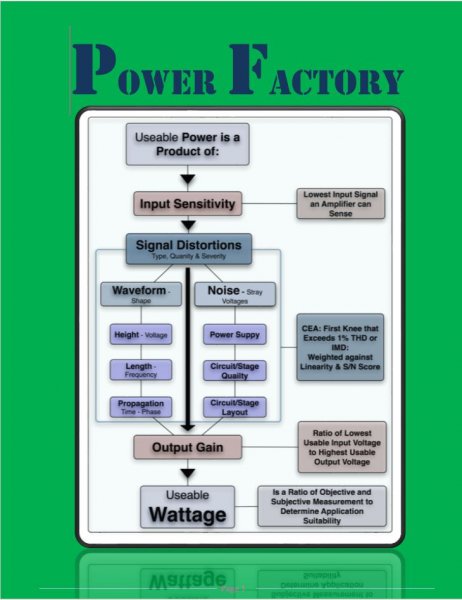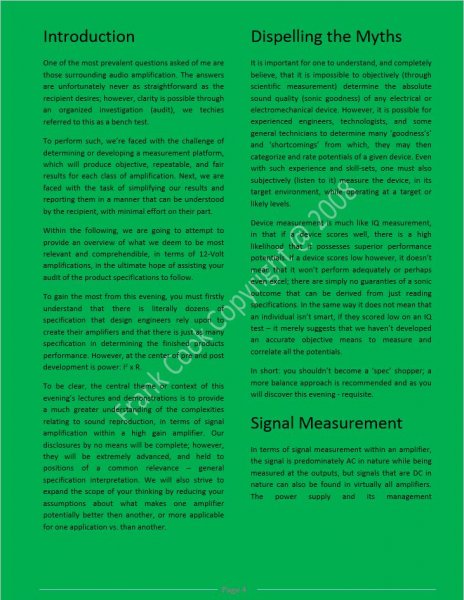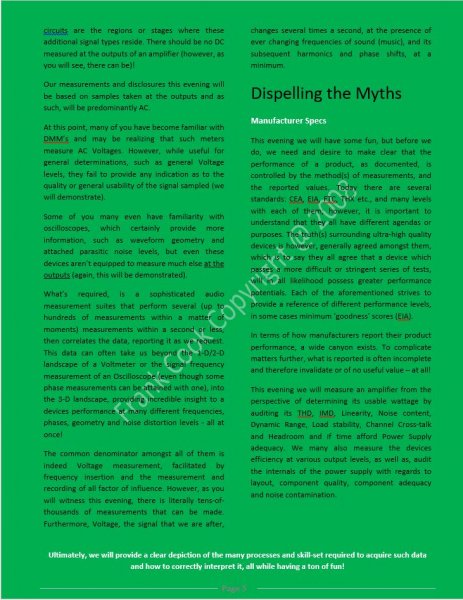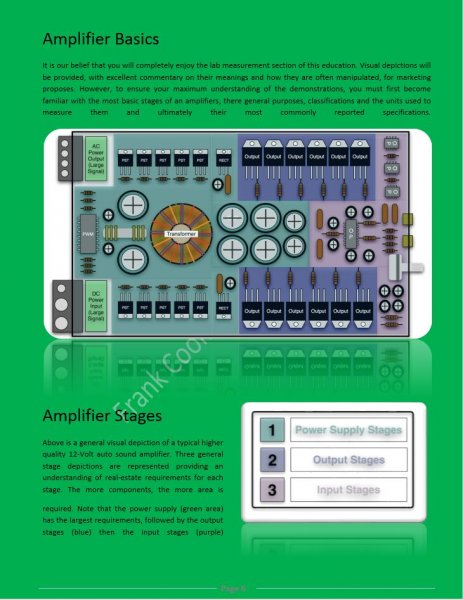The following (attachment) is from Part 1 of a 2 Part lecture series that I developed and delivered several years back, relating to consumer amplifier ratings, and basic amplifier measurement.
It was my initial desire to post both parts, however, the files have become corrupted, but luckily I found a backup of the original draft, of Part 1, of the 2008 modified program. The program was originally developed in 2006, if memory serves me correctly, and went through an update in 2008.
Since I only have a copy of the drafted update, some images will be missing (or in the wrong places, or inserted merely as place holders), and there will be a few too many typo's; however, the central theme seems preserved (and I fill in the gaps if asked nicely, have merit and if the answers are not glaringly obvious, from off the pages), and is sufficient enough to be of value to many of the newer audio enthusiasts, in this forum. Those of whom with significant back grounds relating to the topic, will recognize the 101/baby step approach, taken throughout; and as such, will not glean much value from it.
The program was offered as an elective and ran over the coarse of two long evenings. As you will discover, the context is based in the 12-Volt amplification realm; however, 99% of what is presented is directly transferable to all other categories of audio amplification.
It is a 101 entry point; which aims to acclimate the student in the industry nomenclature, and rating standards/culture, as to provide a base for entry into the 201 level's of education. So IMO, I'd say that it's highly readable, and fairly easy to follow.
Lastly, these excerpts are from the student workbook, and are not complete lessons or ideas as such, on their own. The complete education was provided by the in tandem lecture, lab demonstrations and exercises, which I have not included within this post.
I hope that at least a few of you, find the documentation to be of some value.
Download the entire PDF from:
https://www.dropbox.com/home
Email: avforumdownloads@gmail.com
Password: aquafina
PREVIEW




Entire document available for download via Dropbox link noted above...
It was my initial desire to post both parts, however, the files have become corrupted, but luckily I found a backup of the original draft, of Part 1, of the 2008 modified program. The program was originally developed in 2006, if memory serves me correctly, and went through an update in 2008.
Since I only have a copy of the drafted update, some images will be missing (or in the wrong places, or inserted merely as place holders), and there will be a few too many typo's; however, the central theme seems preserved (and I fill in the gaps if asked nicely, have merit and if the answers are not glaringly obvious, from off the pages), and is sufficient enough to be of value to many of the newer audio enthusiasts, in this forum. Those of whom with significant back grounds relating to the topic, will recognize the 101/baby step approach, taken throughout; and as such, will not glean much value from it.
The program was offered as an elective and ran over the coarse of two long evenings. As you will discover, the context is based in the 12-Volt amplification realm; however, 99% of what is presented is directly transferable to all other categories of audio amplification.
It is a 101 entry point; which aims to acclimate the student in the industry nomenclature, and rating standards/culture, as to provide a base for entry into the 201 level's of education. So IMO, I'd say that it's highly readable, and fairly easy to follow.
Lastly, these excerpts are from the student workbook, and are not complete lessons or ideas as such, on their own. The complete education was provided by the in tandem lecture, lab demonstrations and exercises, which I have not included within this post.
I hope that at least a few of you, find the documentation to be of some value.
Download the entire PDF from:
https://www.dropbox.com/home
Email: avforumdownloads@gmail.com
Password: aquafina
PREVIEW




Entire document available for download via Dropbox link noted above...
Last edited:



















